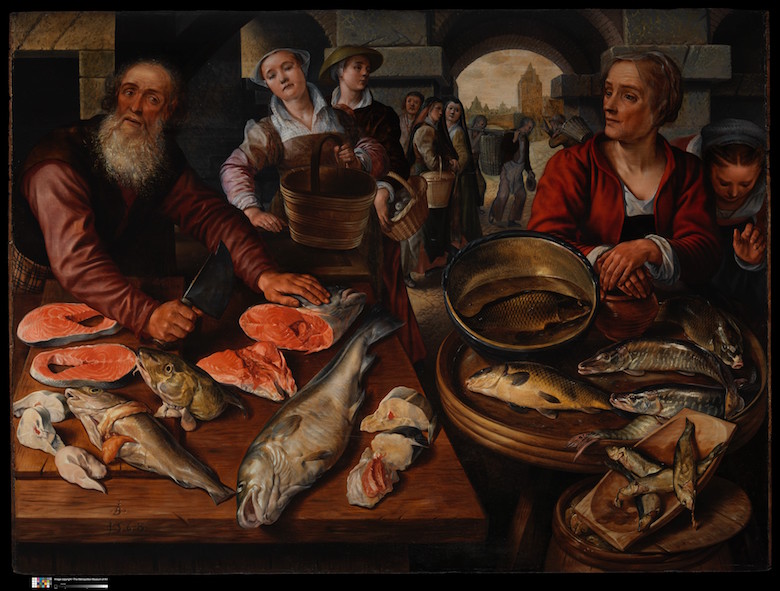
There is food on display at the Metropolitan Museum of Art—actual hunks of 3,500 year old duck and beef preserved using the same process the Egyptians used with the human body, a.k.a., mummified meat. You’ll find the victual at the end of a long, narrow passage, tucked to the side of the Temple of Dendur. It’s not impossible to find on your own, but the unstumpable tour guides from Art Smart can lead you right there.
I spent two hours with Joanna MacFarland and her expansive, encyclopedic art historian’s brain on Art Smart’s new Feast Your Eyes tour, which leads guests through the Met’s collection by catering specifically to culinary tastes. Joanna knew the minutiae of every object we looked at and the cultural and historical context in which it was made. (She must kill at trivia.)
Like this: The first wine connoisseurship is written onto ancient Egyptian amphoras, which were labeled with the name of the vintner and the year of the harvest—just like the bottle of Chardonnay in your fridge; Aztecs took their guacamole just like we do today; and Pennsylvania Dutch settlers cared as much about kitchen self-reliance as DIYers fermenting their own kimchee.
Looking at art in this way isn’t just about gathering a sense of the culinary history of the world, but an expansive, crisscrossing, around-the-world history of human life itself—including the tastes that have changed (peacock tongue or flamingo brain, anyone?) and the ones that have endured (pastoral picnics, raucous drinking games).
“Art and culture are really intertwined. Anything can be an entrypoint,” Joanna said. In the case of Feast Your Eyes, food functions as a familiar entrance into deeper discussions of human nature, morality, desire and conflict. “It’s something for people to latch onto—not just where food comes from but why we eat the way we eat.”
Here are some highlights from our tour:




Learning about Greek symposiums really puts Judy Chicago’s, “The Dinner Party” in context. If you’re a woman in ancient Greece, you’re playing a musical instrument for some man’s amuseument, not leaning back on a daybed, debating politics, and chowing down. Things get a little better for the ladies invited to Roman conviviums. One time at Nero’s house, guests were showered in rose petals released from wooden coffers at the end of the night. “It was all about what people were saying the next day,” Joanna said. Just like the Met Gala!
After the tour, mind fed, it may be time to attend to the body. Two restaurants have established custom menus to coincide with the tour. There’s a tasting at Aldo Sohm Wine Bar ($60 per person) or a six-course feast at Amali, developed by chef Rachel Goulet, who also studied art history ($100 per person, $45 for wine pairing). The meal begins with a silver platter of oysters and lemons to make a 17th century Dutch painter proud.



